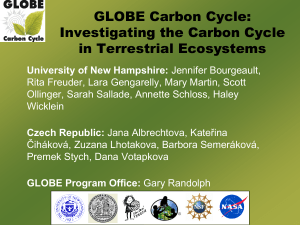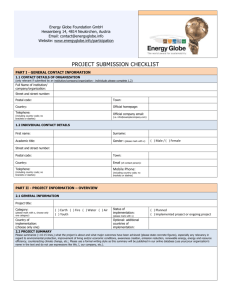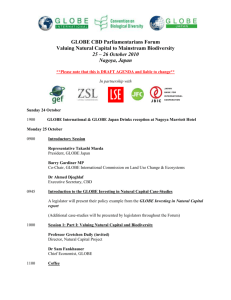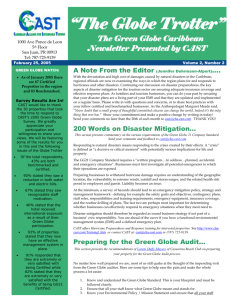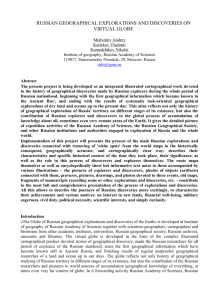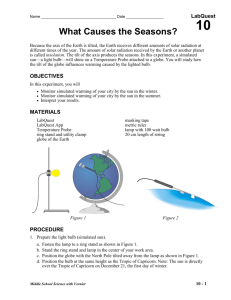Geography Year 3 - Unit 7 Weather around the world
advertisement
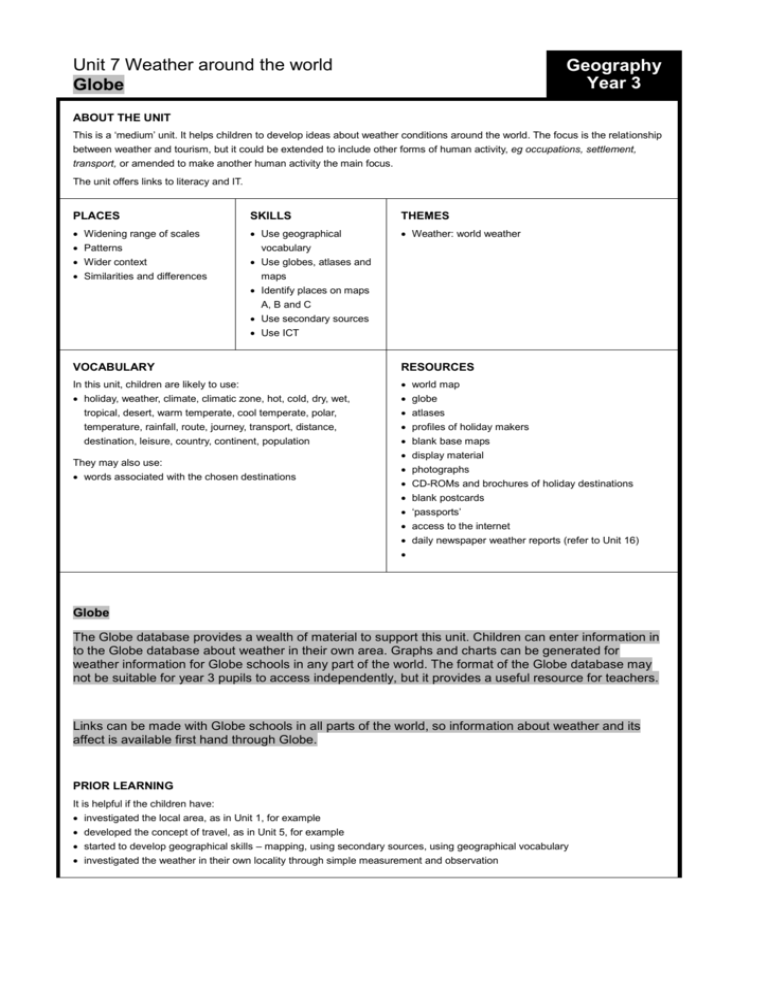
Unit 7 Weather around the world Globe Geography Year 3 ABOUT THE UNIT This is a ‘medium’ unit. It helps children to develop ideas about weather conditions around the world. The focus is the relationship between weather and tourism, but it could be extended to include other forms of human activity, eg occupations, settlement, transport, or amended to make another human activity the main focus. The unit offers links to literacy and IT. PLACES SKILLS THEMES Use geographical vocabulary Use globes, atlases and maps Identify places on maps A, B and C Use secondary sources Use ICT Weather: world weather Widening range of scales Patterns Wider context Similarities and differences VOCABULARY RESOURCES In this unit, children are likely to use: holiday, weather, climate, climatic zone, hot, cold, dry, wet, tropical, desert, warm temperate, cool temperate, polar, temperature, rainfall, route, journey, transport, distance, destination, leisure, country, continent, population They may also use: words associated with the chosen destinations world map globe atlases profiles of holiday makers blank base maps display material photographs CD-ROMs and brochures of holiday destinations blank postcards ‘passports’ access to the internet daily newspaper weather reports (refer to Unit 16) Globe The Globe database provides a wealth of material to support this unit. Children can enter information in to the Globe database about weather in their own area. Graphs and charts can be generated for weather information for Globe schools in any part of the world. The format of the Globe database may not be suitable for year 3 pupils to access independently, but it provides a useful resource for teachers. Links can be made with Globe schools in all parts of the world, so information about weather and its affect is available first hand through Globe. PRIOR LEARNING It is helpful if the children have: investigated the local area, as in Unit 1, for example developed the concept of travel, as in Unit 5, for example started to develop geographical skills – mapping, using secondary sources, using geographical vocabulary investigated the weather in their own locality through simple measurement and observation EXPECTATIONS at the end of this unit most children will: respond to questions about where places are, beginning to offer observations about locations and patterns, eg areas of the world where there are particular types of climate; respond to geographical questions about places and begin to suggest their own geographical questions; undertake simple investigations using maps and secondary sources mainly provided by the teacher some children will not have made so much progress and will: respond to questions about where places are; make simple observations in response to tasks set by the teacher some children will have progressed further and will also: offer appropriate observations about locations and patterns; respond to geographical questions and begin to suggest their own appropriate geographical questions FUTURE LEARNING Children could build on what they have learned in this unit by studying: the characteristics of a tropical climate and its impact on people, eg Units 10 and 11 weather and microclimates, eg Unit 13, and making comparisons with the school locality weather conditions in mountain environments, eg Unit 15 They could also consider ideas about weather events in a recurring way, eg in ‘weather reports’ in Unit 16.




